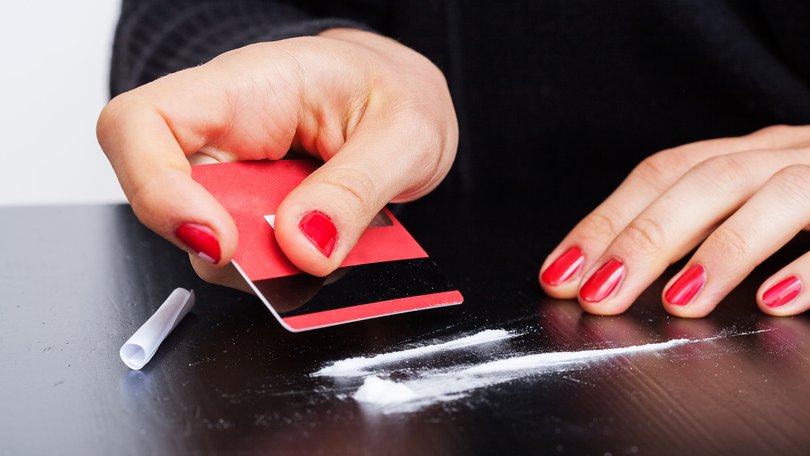Australians are turning to cocaine but drawing the line at other drugs

Drug users are increasingly turning to cocaine rather than ecstasy, marijuana or speed despite the white powder being a very expensive drug, new figures show.
Cocaine sells for up to $400 a gram and is typically illegally imported from South America, making it a particularly expensive illicit drug to snort through a banknote at a party for the likes of highly-paid professionals wanting to have fun after a busy working week.
Its popularity and distribution levels have soared during the past decade even in the face of higher living costs, the New South Wales Bureau of Crime Statistics and Research (BOCSAR) has revealed.
Sign up to The Nightly's newsletters.
Get the first look at the digital newspaper, curated daily stories and breaking headlines delivered to your inbox.
By continuing you agree to our Terms and Privacy Policy.A lawyer and mother of two from Sydney’s eastern suburbs in her early 40s told The Nightly she used cocaine once or twice a month with her husband.
She said she used it to “blow off steam after a busy work week”. The drug “makes you more confident and stops you getting messy on alcohol,” she said. “Need to know when to stop. Used to do it more often when younger. Everyone does it.”
Don Weatherburn, a professor at the University of New South Wales’ National Drug and Alcohol Research Centre who previously ran BOCSAR, said coke was the drug of choice for the rich.
“It’s very expensive as you know. I’m not saying bikies don’t get into it when they can but you see a lot more use of cocaine in the eastern suburbs and a lot more use of heroin and opioids generally in south-western Sydney,” he told The Nightly.
Drugs by numbers
The number of people charged with carrying or using cocaine in Australia’s most populated state climbed by 5.1 per cent but when it came to dealing, the number soared by 9.5 per cent, when the 12 months to June 2025 were compared with the year to June 2016.
“Certainly, there’s been a growth in cocaine use. You only have to look at the health statistics to see that there’s a number of people turning up in emergency departments with problems relating to cocaine, especially psych hospitals,” Professor Weatherburn said.
“Yes, it’s an expensive drug but a lot of people seem to have the money to use on the drug.”
Bill Bowtell, an adjunct professor in health at UNSW, said the high street value of cocaine meant there were more dealers out there seeking to make a profit.
“The one sure way to increase the supply of a drug is to increase its price because if people are prepared to pay $400 a gram for anything, more people will come into the market,” he told The Nightly. “Obviously, the profits are there to do it.”
Cocaine was the only illegal drug to see both an increase in the number of people caught possessing and trafficking it, which Professor Bowtell said demonstrated the failures of drug prohibition.
“There are people who are in the business of buying what they call cocaine. It can be cut with baking soda or God knows what,” he said.
“If just punitive measures worked, there’d be no drug use. That’s obviously not the case. It’s a complete folly to believe there can be eradication. The war on drugs has been a colossal failure.”
By comparison, criminal incidents for possessing marijuana fell by 5.1 per cent as trafficking incidents dropped by 4.3 per cent.
Recorded criminal offences for cultivating cannabis plunged by 9.5 per cent.
“That’s a well-established market. More than half the population have tried it and a big proportion of the public use it on a fairly regular basis,” Professor Weatherburn said.
The decline in ecstasy use was even more dramatic, with a 10.7 per cent drop in possession and use and a 9.4 per cent fall in dealing and trafficking.
The possession of amphetamines, including speed, was stable but when it came to trafficking, the numbers were down 4.6 per cent.
The use of narcotics including heroin, fentanyl and painkillers such as oxycodone was up 5.6 per cent but the figures for dealing were stable.
“The narcotics is a bit of a worry because I suspect a lot of this is pharmaceutical opioid,” Professor Weatherburn. “There’s no doubt that heroin is coming back into the country again.”
During the last financial year, 1894 people were caught being in possession of cocaine, which was more than double the 865 apprehended for having ecstasy.
But the number caught with cannabis was still far higher at 12,288, ahead of amphetamines on 7863 and narcotics on 1393.
The other illegal drug
BOCSAR didn’t have data on illegal tobacco but packets of 20 Benson & Hedges cigarettes are selling for $60, with Federal Government excise now at $1.50 per stick.
“That is a tremendous incentive for people who can supply that market at a lower price than that,” Professor Bowtell said.
The NSW government in July announced maximum jail terms of seven years for having a commercial quantity of illicit tobacco, after Premier Chris Minns blamed high excise for the black market in cheap cigarettes.

